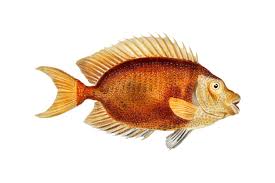Dragons and Their Influence on Beliefs and Religions in China
The dragon is one of the most iconic and revered symbols in Chinese culture, spanning over millennia and influencing various aspects of Chinese society, including art, folklore, politics, and religion. Its importance transcends simple mythology and extends deeply into Chinese religious practices, beliefs, and rituals. This essay explores the multifaceted role of the dragon in Chinese beliefs and religions, tracing its profound influence across ancient traditions, spiritual practices, and modern interpretations.
The Symbolism of the Dragon in Chinese Culture
In Chinese culture, the dragon, or “long” (龙), is far from the fearsome, destructive creature often depicted in Western mythology. Instead, the Chinese dragon is considered a benevolent, auspicious, and powerful symbol. It is a creature of the cosmos, associated with nature, wisdom, and spiritual harmony. The dragon embodies qualities of strength, protection, and good fortune, making it a central figure in Chinese religious and spiritual practices.
Unlike the Western dragon, which is often associated with chaos or evil, the Chinese dragon is seen as a protector and a bringer of prosperity, closely linked to rain, water, and agriculture. It is said that the dragon’s control over the water element symbolizes its role as the deity that governs rivers, seas, and rainfall, making it an essential figure in agricultural societies where the fertility of the land and successful harvests are tied to water sources.
The Dragon in Daoism
Daoism (Taoism), one of the major religious traditions in China, is deeply intertwined with the symbolism of the dragon. This philosophy emphasizes the harmony between humanity and the natural world, with the dragon playing a key role in representing these ideals.
The Dragon as a Taoist Symbol
In Daoism, the dragon is often associated with the forces of the Dao (Tao), the fundamental principle that underpins the natural order of the universe. The Dao is an invisible force that flows through all life, and the dragon is seen as an embodiment of the Dao’s power and vitality. This connection is seen in various Daoist rituals and practices, where the dragon is called upon to represent the forces of nature that maintain balance and harmony.
One of the most famous Taoist texts, the Dao De Jing (Tao Te Ching), written by the sage Laozi, speaks of the importance of harmony with the Dao, which is symbolized by various natural elements, including the dragon. The dragon’s ability to control the elements, particularly water, positions it as a key figure in Taoist thought. The dragon’s ability to navigate both the heavens and the earth reflects the Taoist ideal of adaptability and the seamless flow of energy through all things.
The Dragon in Daoist Rituals
In Daoist temples and rituals, dragon imagery is often used to invoke the powers of the natural world, particularly during ceremonies related to water, rain, and harvests. The dragon is believed to have the power to summon rain, an essential function in an agrarian society that depended on seasonal rainfall for crop growth.
Daoist priests and spiritual leaders may incorporate dragon symbolism in their rituals to ask for divine intervention in times of drought or other natural disasters. Additionally, dragon imagery is often used in Daoist altars, where it is placed alongside other important spiritual symbols, such as the phoenix, to create an atmosphere of balance and cosmic harmony.
The Role of Dragons in Chinese Buddhism
Buddhism, which arrived in China from India during the Han Dynasty, also integrated the dragon into its religious practices and beliefs. In Chinese Buddhism, the dragon is seen as a symbol of protection, power, and spiritual transcendence, and it has a strong presence in Buddhist temples, sutras, and iconography.
The Dragon as a Protector of Buddhist Teachings
In Buddhist mythology, the dragon is often depicted as a guardian and protector of sacred texts and teachings. One of the most notable examples is the “Dragon Kings” (Long Wang), a group of mythological beings who are said to protect the Dharma (the Buddhist teachings). These dragon kings are believed to reside in the oceans and are often invoked for their protection of the teachings and their role in maintaining the spiritual order.
Buddhist scriptures also mention dragons as protectors of Buddha’s relics. In many Buddhist paintings and carvings, the dragon is shown encircling the Buddha or his teachings, symbolizing its role in preserving the purity of Buddhist knowledge. The dragon’s ability to navigate both the earthly and spiritual realms makes it an ideal guardian of sacred teachings.
The Dragon as a Symbol of Spiritual Transformation
The dragon also holds a deeper, symbolic meaning within Chinese Buddhism, representing spiritual transformation and enlightenment. The dragon’s transformation from a lowly, earthly creature to a majestic, celestial being is often used as a metaphor for the Buddhist path of self-realization and enlightenment. In Buddhist art, the dragon is depicted as a creature that ascends from the depths of the sea to the heavens, symbolizing the soul’s journey toward enlightenment.
In this sense, the dragon represents the potential for all beings to transcend their worldly attachments and achieve spiritual liberation. The dragon’s connection to the natural world and its ability to navigate both water and sky mirrors the Buddhist idea of overcoming obstacles and achieving harmony with the universe.
The Dragon in Chinese Folk Religion
Chinese folk religion, which encompasses a wide array of local beliefs, deities, and spiritual practices, also places great importance on the dragon. In folk traditions, the dragon is seen as a protector of the people, a deity who governs natural forces and ensures the prosperity of the land.
The Dragon as a Patron of Water and Agriculture
In rural Chinese communities, where agriculture forms the backbone of life, the dragon is often worshipped as a water god. It is believed that the dragon controls the rain, an essential component for successful crops. Many local temples dedicated to the dragon can be found near rivers, lakes, and other bodies of water, where people perform rituals to ask for rain and favorable weather conditions for their crops.
Dragon dance performances, often seen during the Chinese New Year and other important festivals, are not just a form of entertainment; they are also intended to invoke the dragon’s blessings for a prosperous year. The dragon is thought to bring good fortune, ward off evil spirits, and ensure a bountiful harvest.
Dragon Worship in Local Shrines and Temples
In many villages and towns across China, local shrines and temples are dedicated to dragon deities. These shrines are places of worship where people come to pay homage to the dragon, seeking its protection and blessings. The dragon is believed to have the power to ward off evil spirits and protect the community from harm. As such, dragon worship is closely linked to the daily lives of ordinary people, who rely on the dragon’s power to ensure their safety, happiness, and prosperity.
The Dragon’s Influence on Chinese Imperial Beliefs
The dragon also plays a significant role in the beliefs of the imperial court and the royal family. The Chinese emperor was often referred to as the “Son of the Dragon,” a title that emphasized his divine right to rule and his connection to the cosmic forces represented by the dragon. The emperor’s throne was often adorned with dragon imagery, and the dragon became a symbol of imperial power and authority.
The Dragon as a Symbol of Imperial Authority
In imperial China, the dragon was not only a symbol of good fortune and spiritual power but also a symbol of imperial rule. The emperor’s authority was believed to be sanctioned by the dragon, and he was considered the earthly representative of the divine dragon. As the “Son of Heaven,” the emperor was expected to govern in harmony with the forces of nature, as embodied by the dragon.
The use of dragon imagery in imperial rituals and ceremonies, such as the coronation of the emperor and religious ceremonies, reinforced the emperor’s divine mandate and connection to the gods. The dragon’s role in these ceremonies emphasized the sacred nature of the emperor’s rule and his duty to maintain harmony between heaven and earth.
The Modern Influence of the Dragon in Chinese Spirituality
Even in modern China, the dragon remains an important cultural and spiritual symbol. Although traditional religious practices may have evolved or diminished over time, the dragon continues to play a role in Chinese spirituality, both in official religious contexts and in everyday life.
The Dragon in Contemporary Spiritual Practices
Today, the dragon can still be seen in Chinese temples, folk festivals, and cultural events. It remains a powerful symbol of spiritual energy, vitality, and protection. For instance, the dragon is a central figure in the celebrations of Chinese New Year, where the dragon dance is performed to bring good luck and drive away evil spirits.
In modern Chinese spirituality, the dragon is still invoked as a symbol of prosperity, longevity, and spiritual strength. It continues to represent the ideal of harmony between humanity and the natural world, as well as the power of the divine to shape the fate of the people.
Conclusion
The dragon holds an enduring and influential place in the religious and spiritual landscape of China. Whether as a guardian in Daoism, a protector in Buddhism, or a deity in folk religion, the dragon symbolizes the harmony between humanity, the natural world, and the divine forces that govern the universe. From ancient times to the present day, the dragon has shaped Chinese beliefs and religious practices, embodying the qualities of strength, wisdom, protection, and prosperity. Its powerful symbolism continues to inspire awe and reverence among the Chinese people, making it one of the most enduring and significant symbols in the country’s spiritual traditions.


